
Archaeologists from the University of Wrocław working in southern Peru discovered a cemetery with the remains of 24 people, mainly women and children. The wounds the deceased suffered indicate that they died as a result of an invasion that took place almost ten centuries ago.
Scientists from the Institute of Archaeology of the University of Wrocław have completed another season of excavations at the El Curaca site, located in the final section of the Atico River valley in southern Peru. 'This is a multicultural site that we have been gradually researching since 2022', says the project manager, Professor Józef Szykulski from the Institute of Archaeology of the University of Wrocław, honorary professor at the Universidad Católica de Santa María in Arequipa.
During the recently completed excavation season, the archaeologists discovered, among other things, a cemetery with the remains of 24 people, mainly women and children, wrapped in burial shrouds and buried with numerous gifts. Anthropological analysis of the bones confirmed that the deceased did not die a natural death. This is evidenced by numerous injuries to the skulls and chests, which were the direct cause of death for all individuals.
'We came across a cemetery of people who were killed during a raid. Each skull found in this place shows significant damage, resulting from a blow inflicted either with a club with a copper head in the form of a star, or a club with a spherical stone head', Szykulski describes.
The researchers believe that the killings were committed by a group that attacked the camp. However, the invaders probably lost the confrontation, and the members of the community the deceased came from buried their loved ones after the victorious battle.
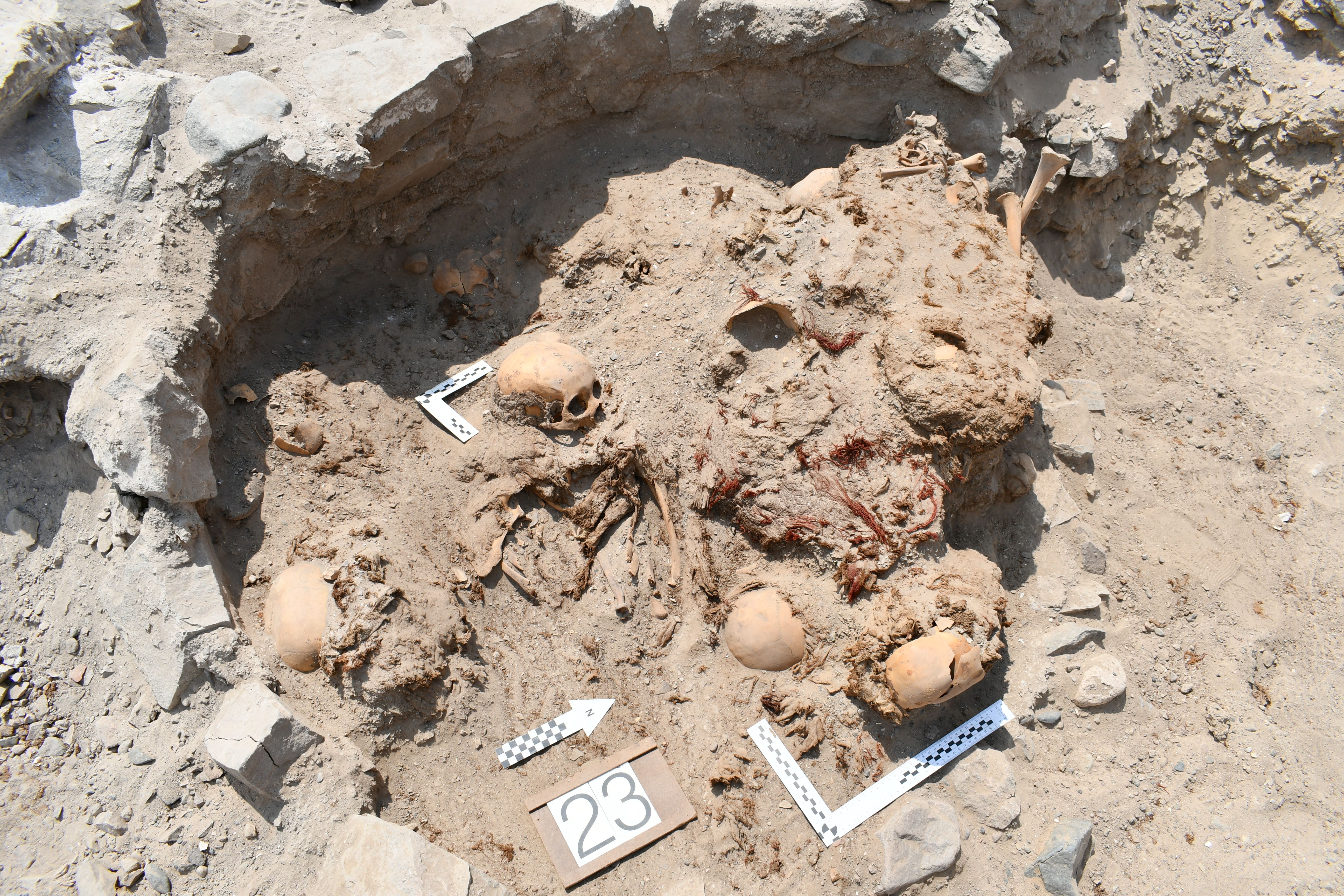
'This conclusion is supported by the fact that the deceased were buried with honours, wrapped in shrouds made of wool or cotton and provided with grave goods, and then the burial pits in which the bodies were placed were enclosed with a stone wall', Józef Szykulski reports.
Bone and stone tools, ornaments, textiles and fragments of ceramics were found in the graves, they should be associated with the Chuquibamba (Aruni) culture. Its epicentre is located in the Majes basin, south of Atico.
The fact that a significant battle took place an the area is also evidenced by numerous copper axes, star-shaped club heads, as well as the aforementioned stone club heads in the form of a ball, found at the El Curaca site.
The researcher assumes that the described events could have taken place during the period of rapid political changes and migrations that took place from the 11th century CE.
During work carried out at the El Curaca site in the Atico Valley, archaeologists from the University of Wrocław and the Universidad Catolica de Santa Maria in Arequipa also discovered a structure in the form of a circular well with walls and bottom lined with stones, joined with clay mortar. Inside, they found 29 burials of children and women, arranged in several layers.
'There were no traces indicating that these people died a violent death. It should be assumed that we are dealing with a mass grave, of individuals belonging to one large family, one clan, a community that successively buried their dead in the same place over a period of 40-50 years. The C14 dating of the tomb indicates that it comes from the 5th-6th century. The goods found in the grave include both objects related to the early agricultural communities of the region, as well as the Nasca culture that developed further north, whose influence also reached the Atico Valley. The deceased were buried with intricately woven Nazca style textiles, balls of multi-coloured threads, spindles, pendants with a human face, as well as pendants made of semi-precious stones depicting a whole figure', Szykulski says.

During the research conducted in the Atico Valley, researchers noticed a very large number of child burials, even for pre-Columbian cemeteries. It is common knowledge that in pre-Columbian communities, at best every second child survived the first years. However, in this case, the mortality rate was much higher.
'It cannot be ruled out that the cause of such high mortality among infants and small children was environmental contamination. Remember that in the upper part of the Atico catchment area there are deposits of copper and gold, which also contain highly toxic arsenic. Its penetration into groundwater and the Atico River itself could have had a serious impact on the health of the community inhabiting this area. Laboratory tests commissioned in Peru at the end of April will verify the validity of this hypothesis', the researcher explains.
The Atico project carried out by the University of Wrocław is financed with a grant awarded by the Polish National Science Centre (Opus21).
PAP - Science in Poland, Ewelina Krajczyńska-Wujec (PAP)
ekr/ zan/ lm/
Gallery (13 images)
-
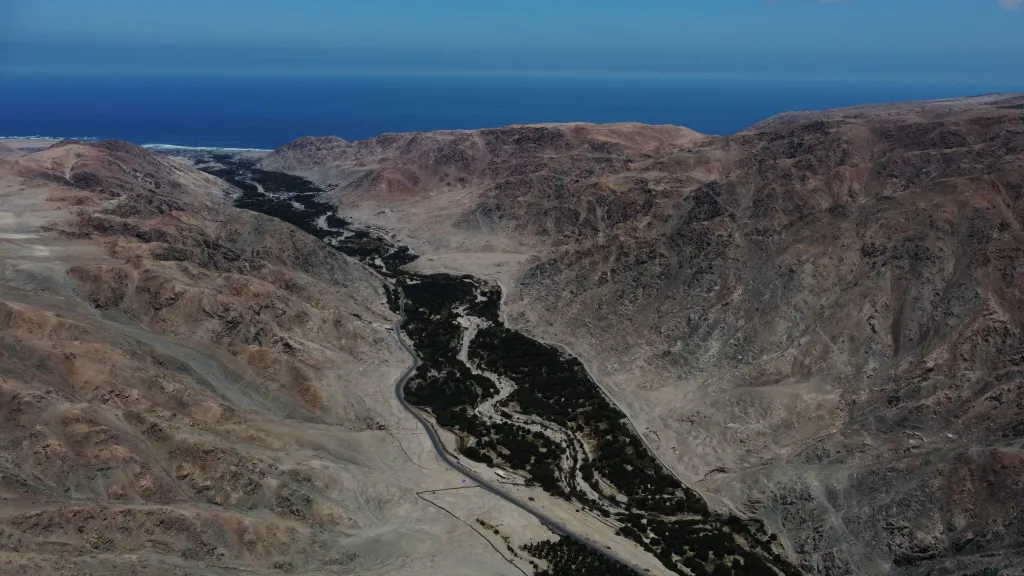 1/13Atico Valley, general view of the El Curaca site. Credit: Józef Szykulski
1/13Atico Valley, general view of the El Curaca site. Credit: Józef Szykulski -
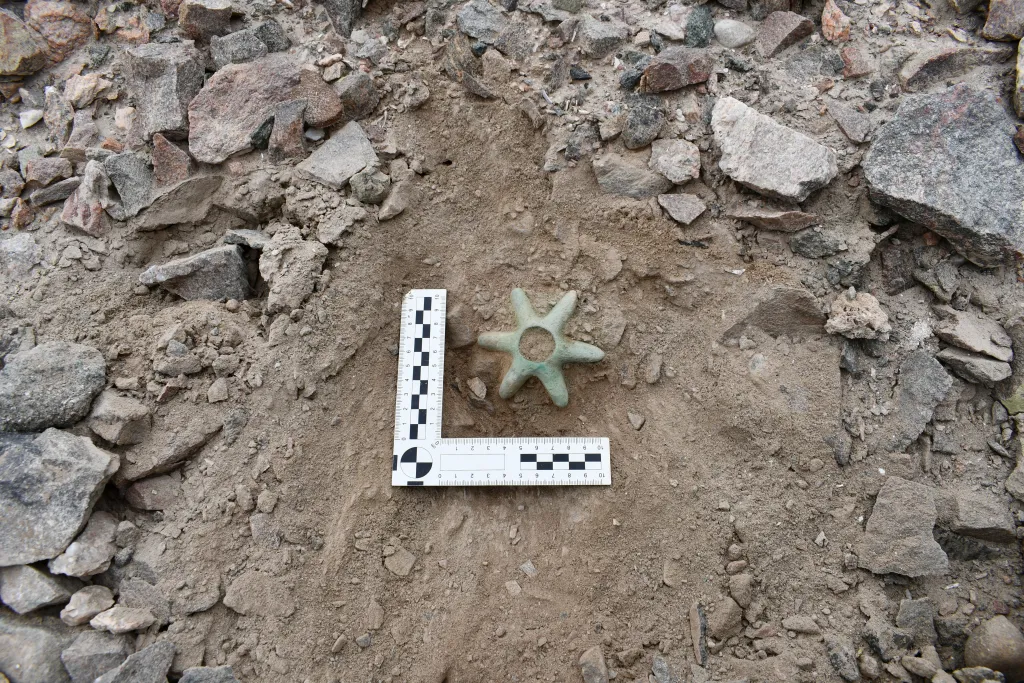 2/13Copper club head found in El Curaca. Credit: Józef Szykulski
2/13Copper club head found in El Curaca. Credit: Józef Szykulski -
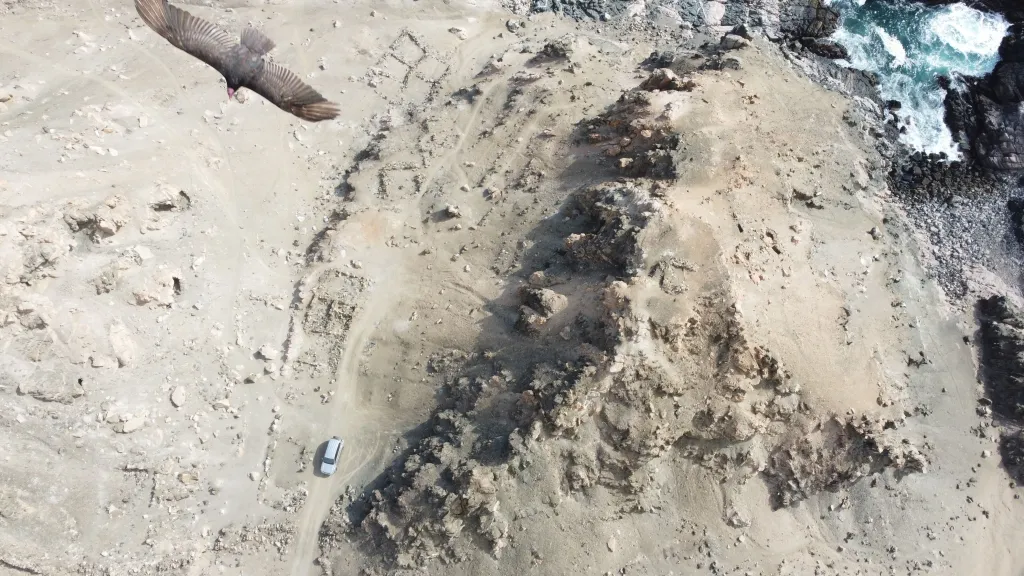 3/13El Toro site at the mouth of the Atico on the Pacific Ocean. Credit: Józef Szykulski
3/13El Toro site at the mouth of the Atico on the Pacific Ocean. Credit: Józef Szykulski -
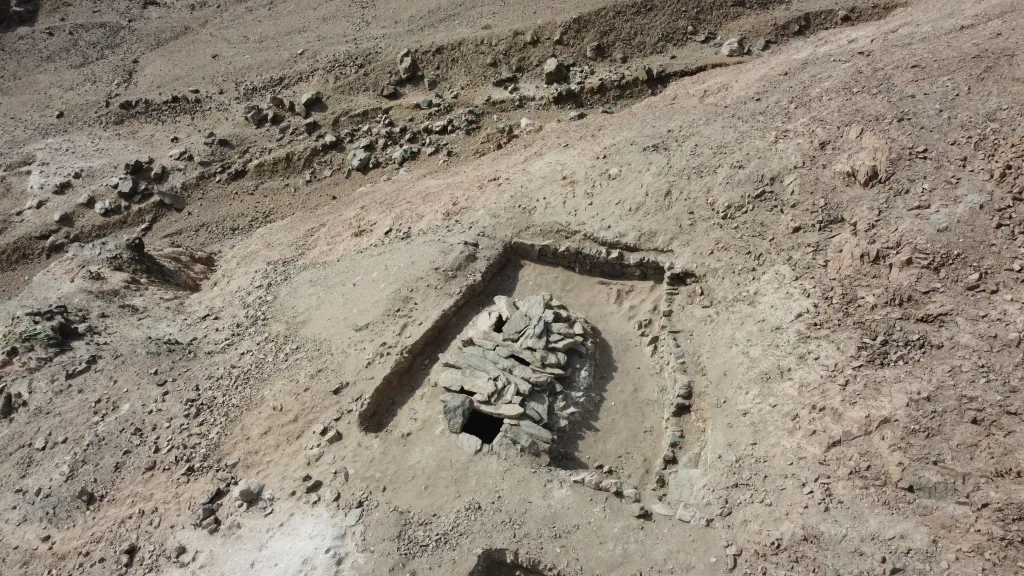 4/13A looted stone tomb, probably from the Huari civilization (600-1000 CE). Credit: Józef Szykulski
4/13A looted stone tomb, probably from the Huari civilization (600-1000 CE). Credit: Józef Szykulski -
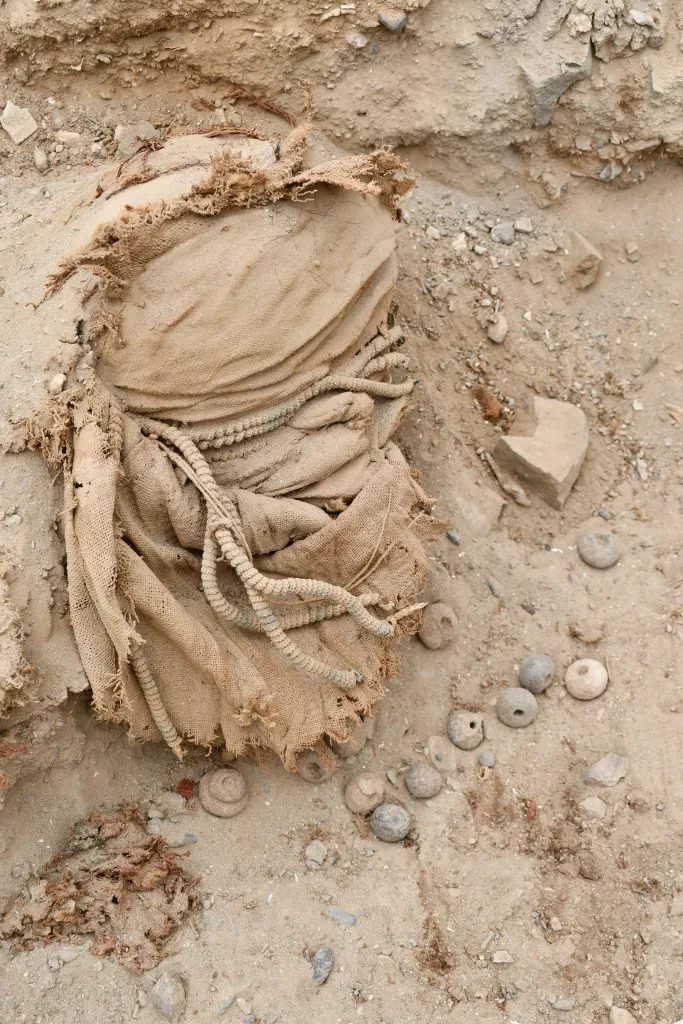 5/13A mass grave with 24 burials; the bodies were wrapped in burial shrouds. Credit: Józef Szykulski
5/13A mass grave with 24 burials; the bodies were wrapped in burial shrouds. Credit: Józef Szykulski -
 6/13A mass grave with 24 burials; the bodies were wrapped in burial shrouds. Credit: Józef Szykulski
6/13A mass grave with 24 burials; the bodies were wrapped in burial shrouds. Credit: Józef Szykulski -
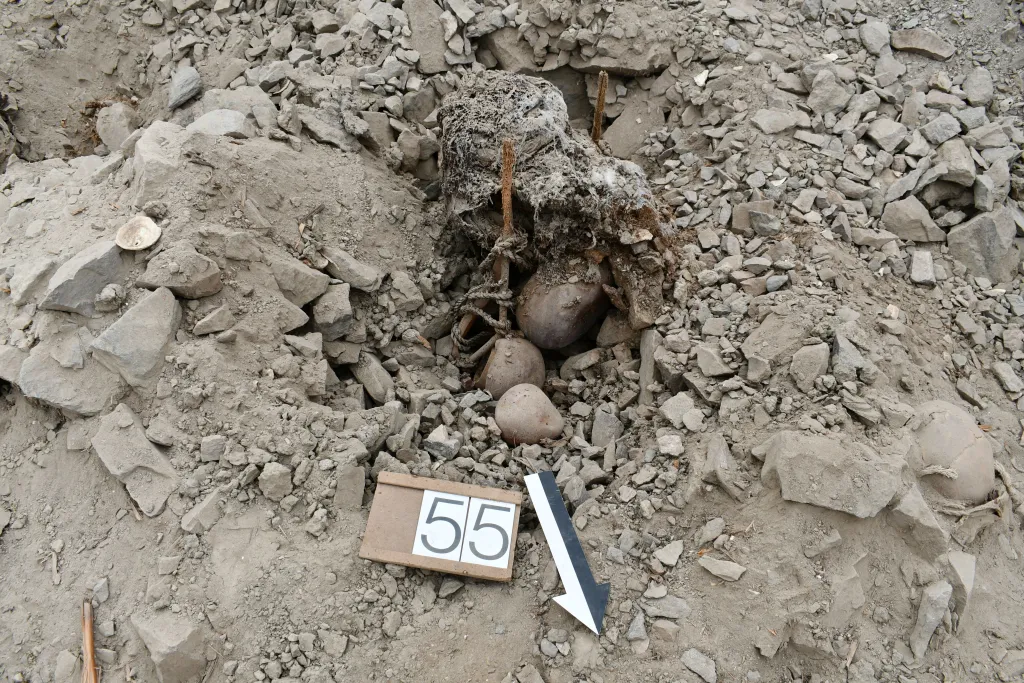 7/13Burials of individuals killed during the conflict. Credit: Józef Szykulski
7/13Burials of individuals killed during the conflict. Credit: Józef Szykulski -
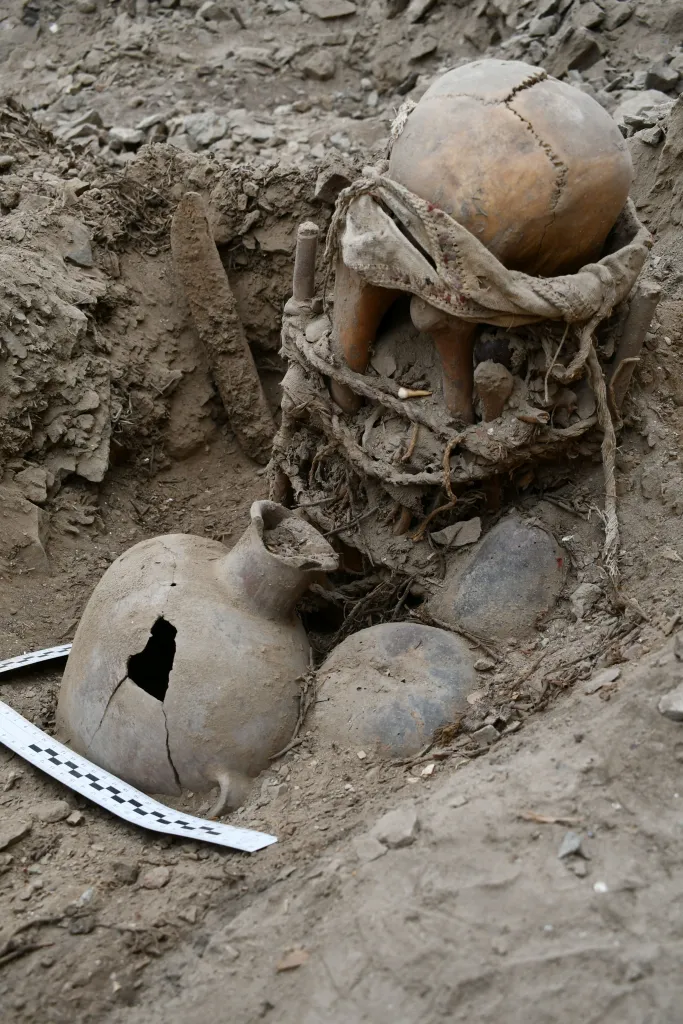 8/13Burials of individuals killed during the conflict. Credit: Józef Szykulski
8/13Burials of individuals killed during the conflict. Credit: Józef Szykulski -
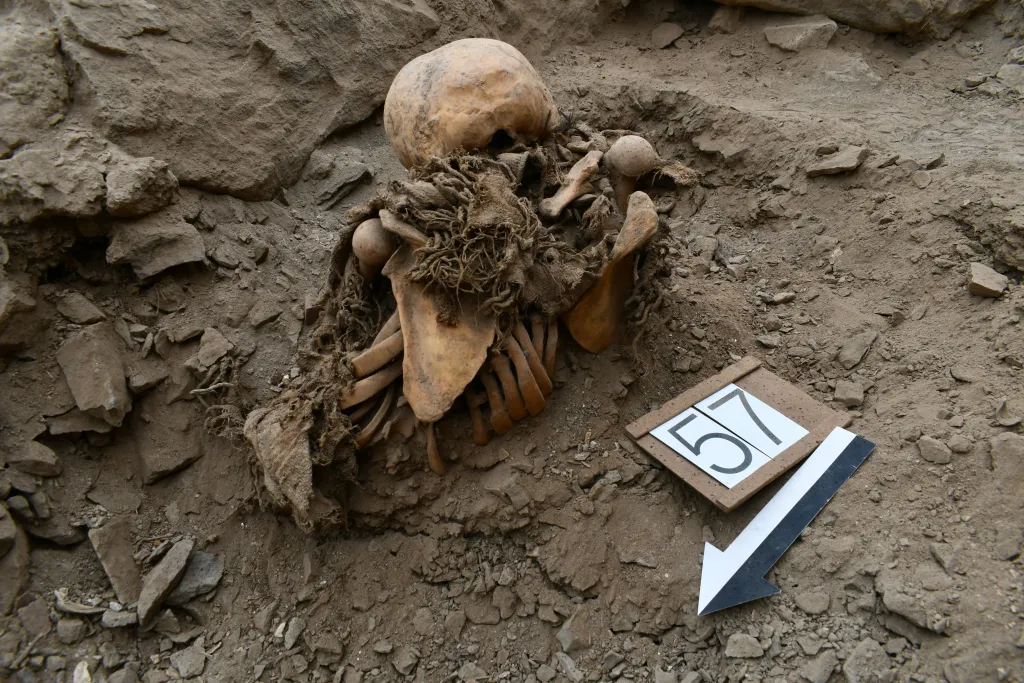 9/13Burials of individuals killed during the conflict. Credit: Józef Szykulski
9/13Burials of individuals killed during the conflict. Credit: Józef Szykulski -
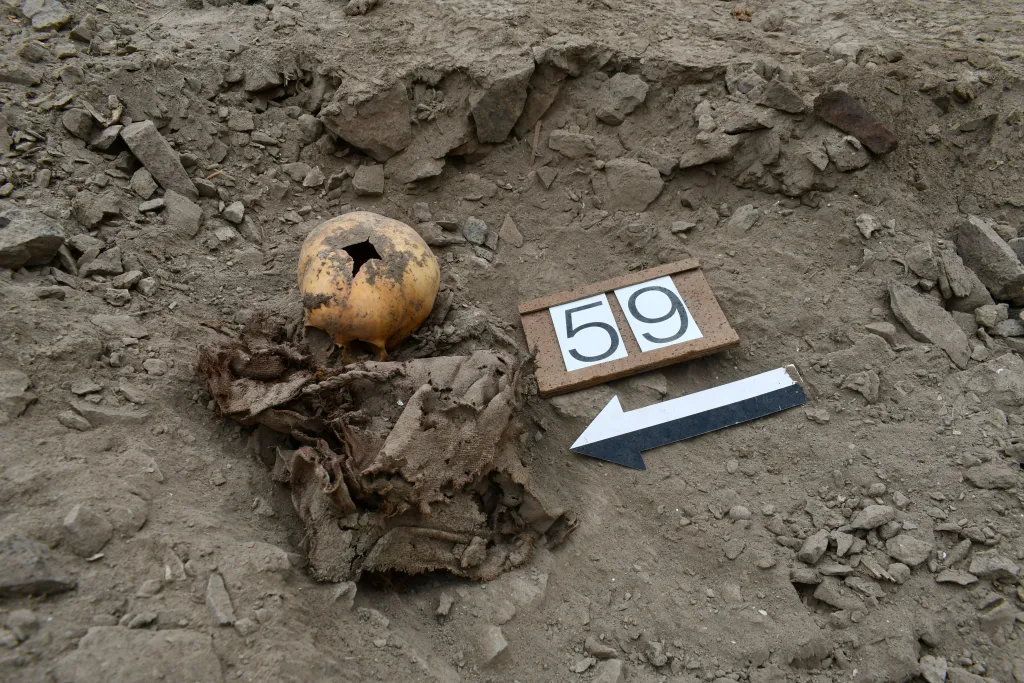 10/13Burials of individuals killed during the conflict. Credit: Józef Szykulski
10/13Burials of individuals killed during the conflict. Credit: Józef Szykulski -
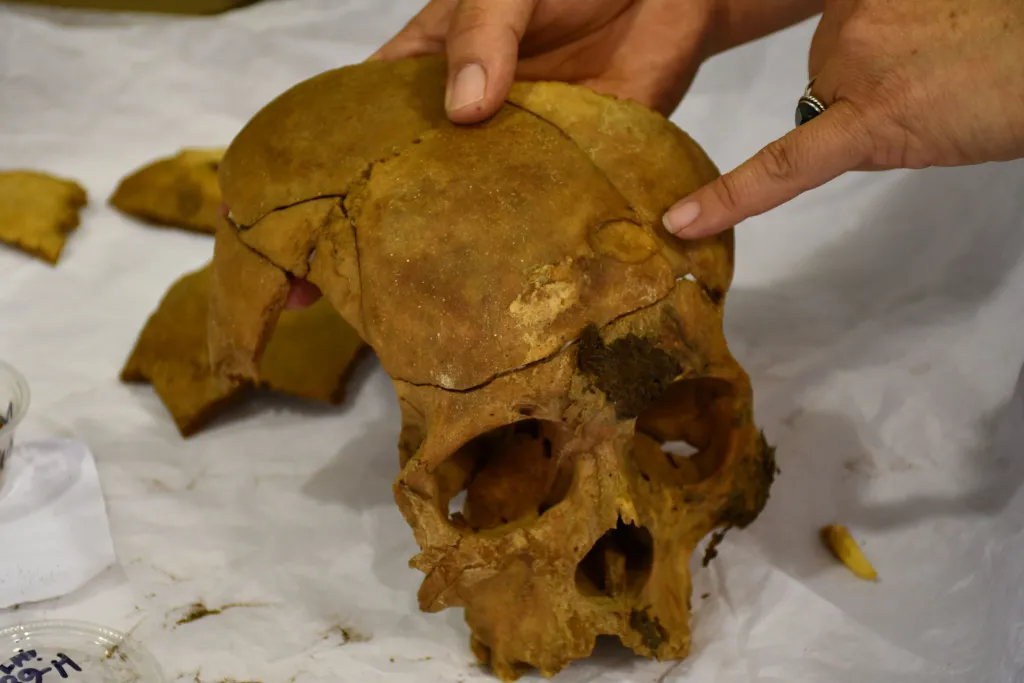 11/13A skull with traces of club blows. Traces of blows also visible in the photos. Credit: Józef Szykulski
11/13A skull with traces of club blows. Traces of blows also visible in the photos. Credit: Józef Szykulski -
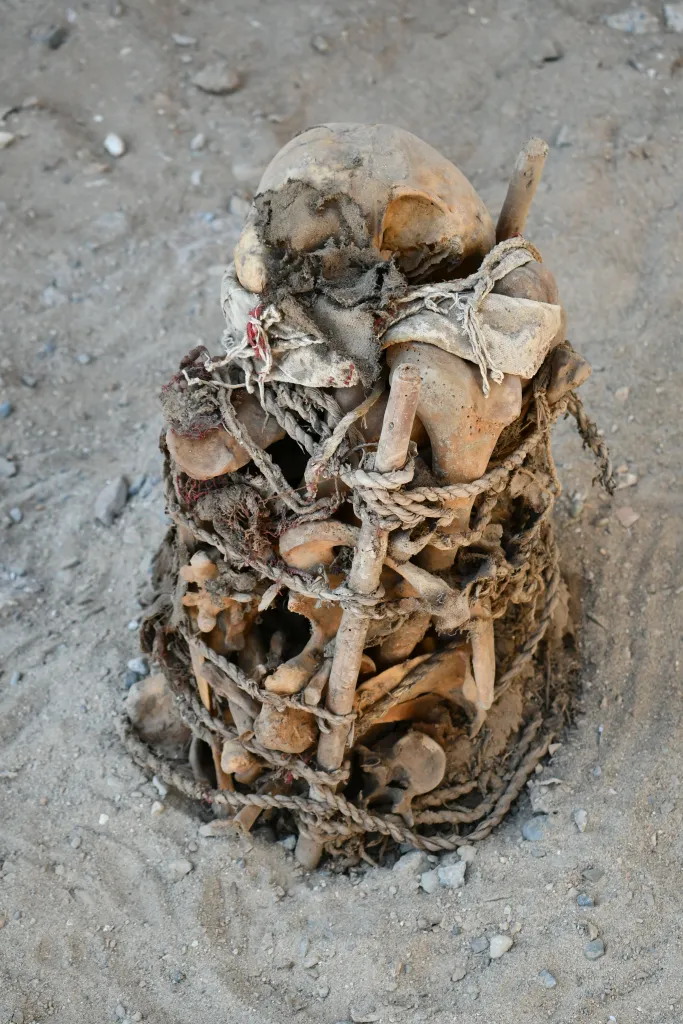 12/13The excavated burial of one of the deceased. Credit: Józef Szykulski
12/13The excavated burial of one of the deceased. Credit: Józef Szykulski -
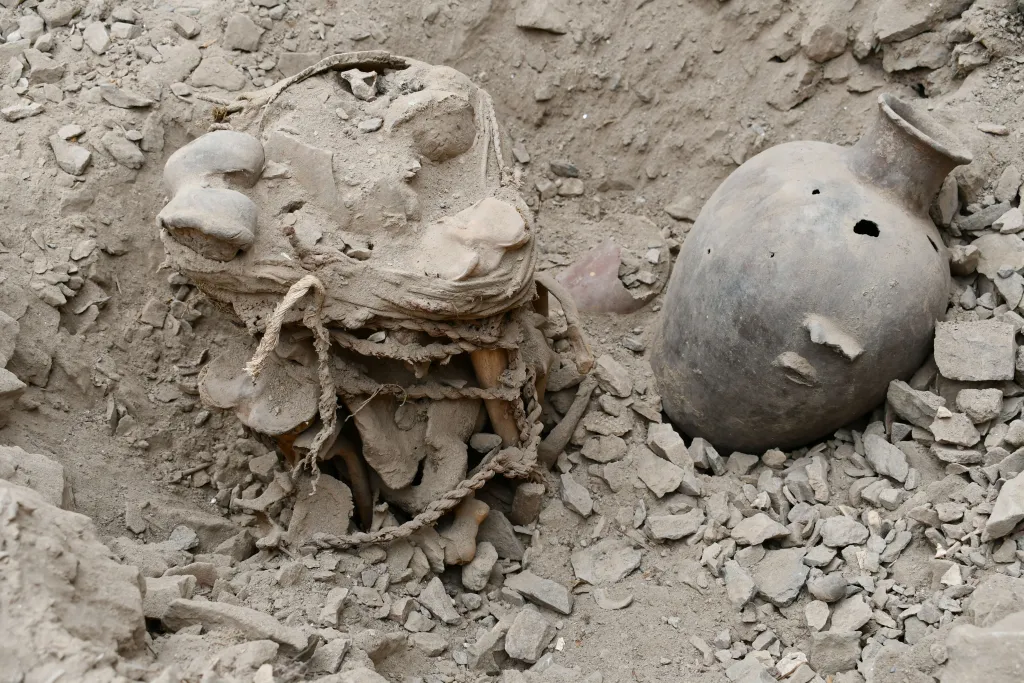 13/13Burials of individuals killed during the conflict. Credit: Józef Szykulski
13/13Burials of individuals killed during the conflict. Credit: Józef Szykulski













